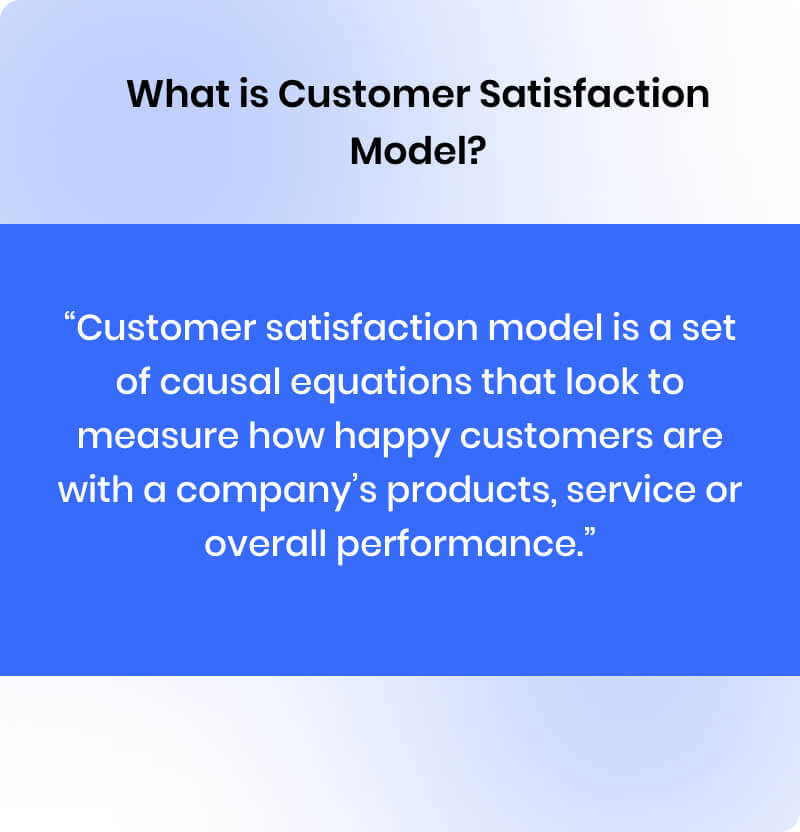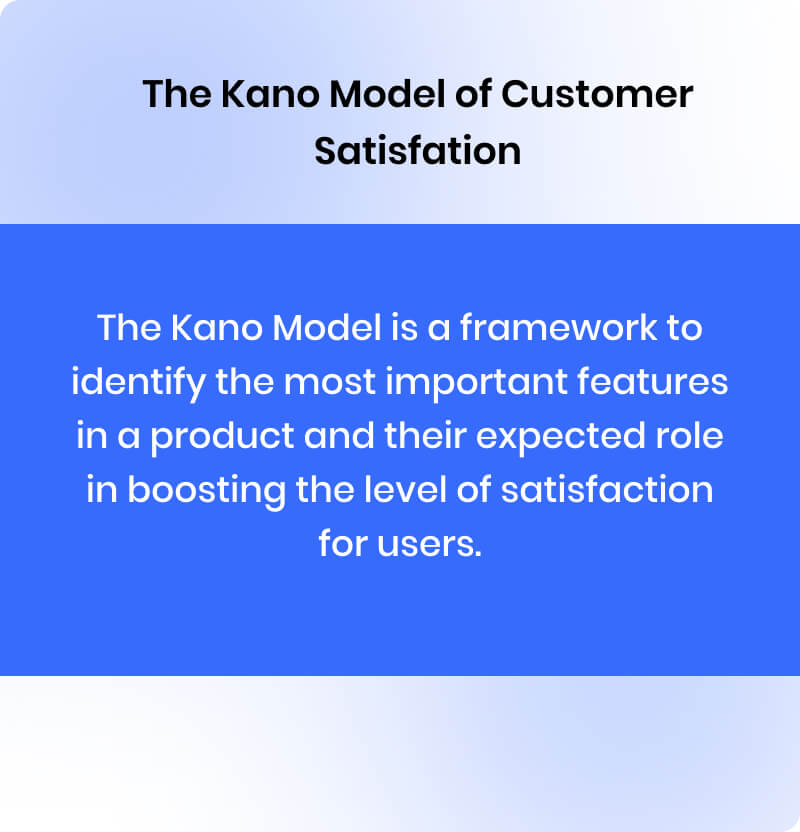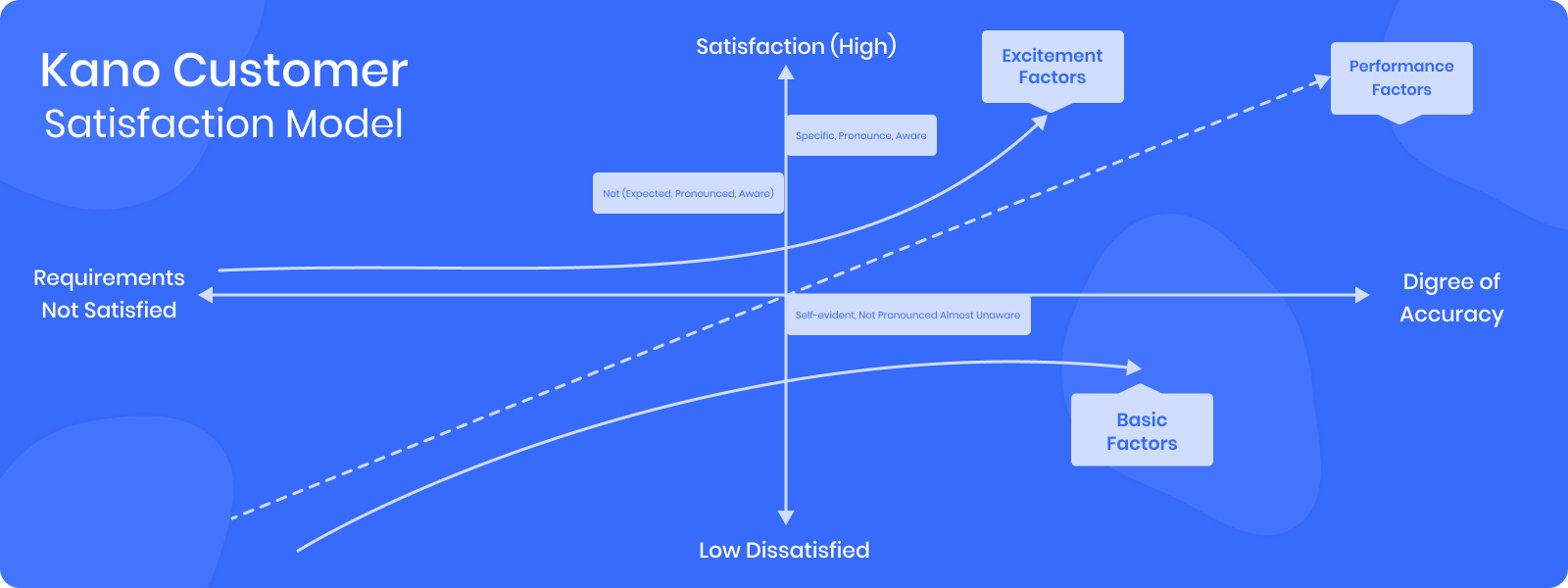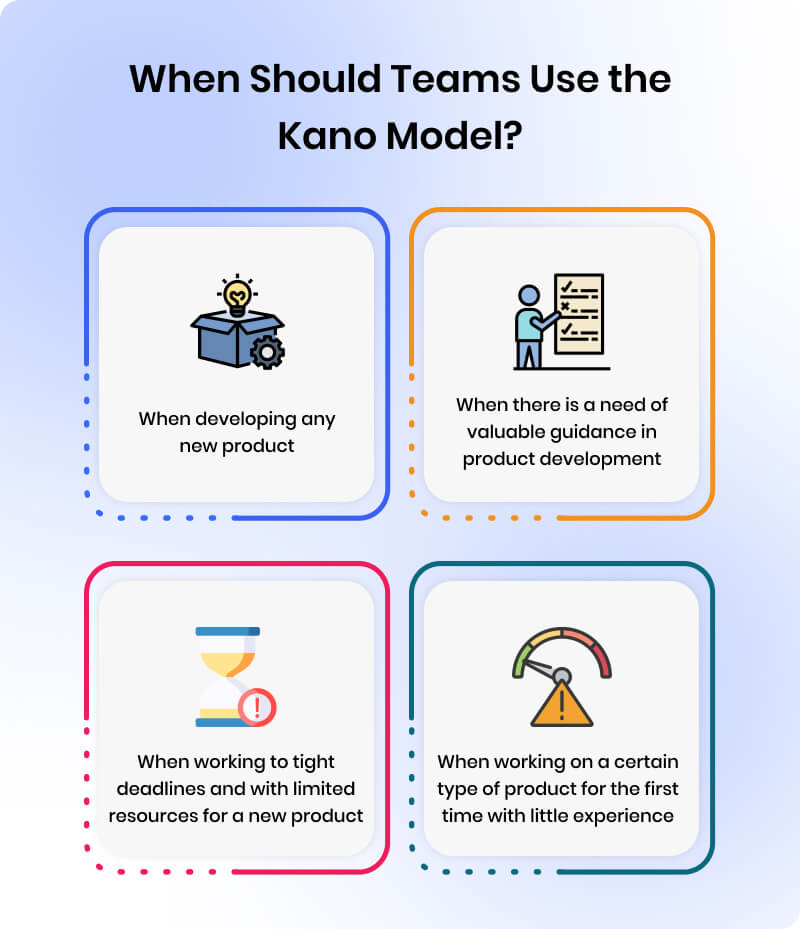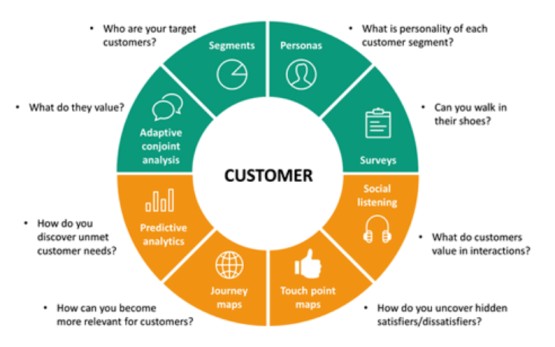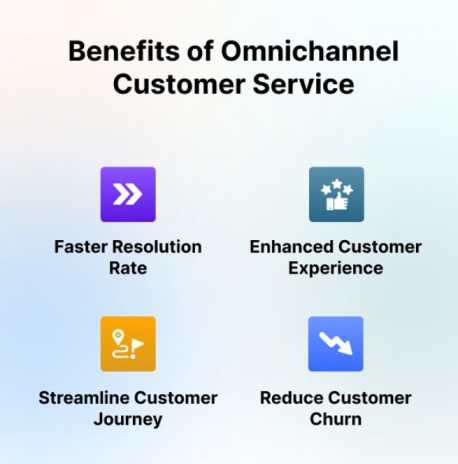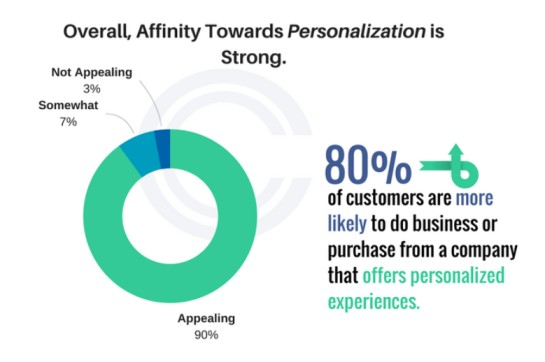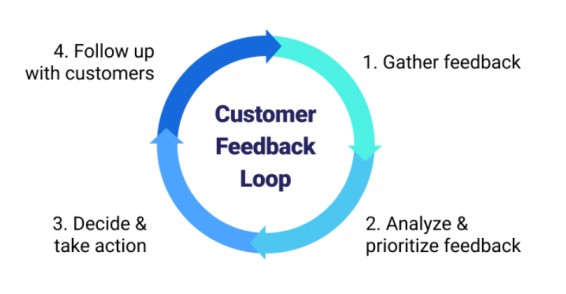Making customers happy is never an easy task. And keeping them pleased for long is equally hard.
So much so that even when you think your product or service has good quality, you’re never quite sure whether your customers will feel happy or not. After all, there are so many factors that decide customer satisfaction with a brand.
The reality is that your business can never succeed unless it figures out how to meet customer satisfaction needs. You also have to understand the different types of customers’ needs and then use them to enhance product design and features.
This is where a customer satisfaction model can help. Its relevance is huge to both product and service marketing.
You should thus benefit from the model to know what your customers expect of you.
In this blog, we will discuss the Kano model of customer satisfaction and its utility for your business.
What is the Customer Satisfaction Model?
The customer satisfaction model is a set of causal equations that look to measure how happy customers are with a company’s products, services, or overall performance. The model is a helpful tool for companies to determine the ways to change, improve or upgrade their products and services with the view to make customers happy.
A model of customer satisfaction takes into account various factors such as perceived quality, perceived value, and customer expectations in ascertaining customer satisfaction. For a business, it’s one of the best tools to measure customer satisfaction level with their brand and take steps to improve that.
The Kano Model of Customer Satisfaction
The Kano Model was first conceptualized and created by Professor Noriaki Kano in 1984. It was developed as a part of the research into various factors of products or services that satisfy customers.
The Kano Model is a framework to identify the most important features in a product and their expected role in boosting the level of satisfaction for users. It also shows the relation between customer satisfaction level and the different attributes of a product or service
The focus of the Kano model is to help teams view products from the user’s point of view.
By using the Kano Model, it’s possible to create products that not only meet customers’ needs but also ensure lasting value over time.
How Does the Kano Model Work?
The Kano Customer Satisfaction Model brings a rational, structured approach to product development. It also offers a great insight into the product attributes that are supposed to be important to customers.
Teams that employ this model pull together a list of potential new product features or attributes with the capability to enhance customer experience. Those attributes are then weighed according to two key criteria –
- The resources and investment needed to implement them.
- Their potential to make customers happy.
As per the model, the product attributes are split into four categories –
- Threshold Attributes – Customers expect these attributes and therefore they are the “musts” of a product or service.
- Performance Attributes – These are features that deliver a proportionate increase in customer satisfaction and customer is always willing to pay for a product for its performance attributes.
- Excitement Attributes – These attributes are generally unexpected by the customers and their presence naturally delights them and ensure high satisfaction.
- Indifferent Attributes: They have little or no importance to the customer and neither do they impact the decision-making.
When Should Teams Use the Kano Model?
Kano’s Model of Customer Satisfaction is a pioneering theory of product strategy and customer satisfaction. Its value is huge for businesses that want to develop quality products with a view to achieving customer happiness all the time.
This model can be used at various times and for various reasons, including –
- Product teams can utilize it when developing any product.
- It can prove very beneficial for teams aiming for quality products yet working to tight deadlines and with limited resources.
- The Kano Model is a great help for teams that have little experience or that are working on a certain type of product for the first time.
- Teams that need valuable guidance in product development and that want to know which features must be included or not should use it.
- The Kano model is also a fantastic resource for teams looking to release a new product to the market as soon as possible.
Types of Customer Satisfaction Models
For businesses, it’s always important to know what makes their customers happy and then plan strategies to meet their expectations. The good thing, the industry has various models to gauge customer satisfaction.
The four types of customer satisfaction models are –
- The Disconfirmation of Expectation Model
- The Performance Model
- The Rational Expectations Model
- The Expectations Artefact Model
Tips to Boost Customer Satisfaction
Happy customers are never an accident. They are the result of a customer-centric approach for a sustained period of time. And a business also has to understand customers and their requirements better if it wants to deliver satisfaction to them. Plus, there is plenty of kano’s model of customer satisfaction examples to get the idea and take an effort for happy customers.
You can devise various strategies to boost customer satisfaction for the business.
1. Understand Your Customers Better
A business that knows its customers well achieves more!
To understand your customers means you first need to anticipate and identify their needs and then take steps to meet those needs.
You must know your customer’s preferences and interests better as only this can help in the delivery of personalized services. And when you connect at a personal level, it always translates into great experiences.
And you should know how 86% of buyers will happily pay more for a great customer experience.
Plus, customers that have good experience with a brand are more likely to convert into brand advocates.
You can also use the model of customer satisfaction to ensure the product has all the attributes to delight your target audience.
Tips to understand your customers
- Do the research and analyze your current customer base to create a buyer’s persona to get knowledge of your ideal customers.
- Seek feedback from your customers to know what they like about your products, what they don’t like, and what changes they would like to see in the future.
- Analyze your competitors to know what the audience generally expects from companies in your niche and then try to bring a similar or better offer.
2. Deliver Omnichannel Support
Customers feel happy when they have the flexibility to choose the channel of choice in contacting a business. They feel bad when companies don’t provide support on every popular channel.
To keep customers happy, you should think of adopting an omnichannel support strategy where you will be where your customers are.
By adopting this strategy, you can seamlessly engage your customers over their preferred channels and manage all the conversations under a single platform.
Omnichannel support helps you handle everything be it text, social feed, or email, at a single source and deliver quick responses.
You will thus deliver consistent support across all the touchpoints and ensure a unified brand experience. This is how you can enhance your brand credibility.
How to boost customer satisfaction with omni channel support?
- You can achieve a high first contact resolution (FCR) rate and improve customer satisfaction.
- You can analyze customer journeys across touchpoints and gain key insights into their preferences and behavior, therefore making relevant changes to product design.
- You can be present across all channels and make it easy and quick for customers to get help.
3. Personalize Your Communication
The more you personalize your communication, the more you delight customers.
In fact, 80% of customers are more likely to buy from a brand that offers personalized experiences. This clearly shows the huge value in making interactions customized to the needs of customers.
The real value benefit of personalization lies in tailoring your messaging in alignment with customer behavior. Your business however will need the right set of engagement tools to personalize customer interactions.
You should also benefit from the customer satisfaction model to know the extent of personalization needed to make customers happy.
And once you’re able to personalize your interactions, you can easily meet the customer delight index.
Best practices in personalized customer communication
- Take a regular survey or run feedback to ask your customers about their preferences so that you can personalize the experience.
- Use tools like live chat and AI chatbot to initiate conversations with customers and then get the analytics for personalization.
4. Deploy AI-powered Chatbot to Customer Service
Chatbots can save up to 30% in support costs but that should be the least of its benefits when it comes to boosting customer satisfaction.
Saving costs is fine but chatbots can do better and bigger things for your brand. And it can help you deliver an improved customer experience. Maybe that’s why more brands now look to deploy AI-driven chatbots to boost their customer service experience strategy and achieve happy customers.
When chatbots are part of customer support, it means your business can speed up response time and automate FAQs. Plus, they are the best tool to meet customer requests in real-time and reduce the need for long queues.
Tips to use chatbots for improved customer satisfaction
- Engage your customers 24×7 to answer their queries even when your support team is away or busy.
- Use AI chatbots to collect basic customer details such as name, email, etc. for meeting personalization targets.
- Combine chatbot with live chat for hybrid support so that customers’ complex queries are handled by humans while routine ones by bot.
5. Provide Real-time Assistance
For customers, time is a precious commodity. And they love brands that respect time in offering support. Maybe that’s why they also expect businesses to deliver support on time. And if you don’t, it might frustrate your customers.
With real-time customer service, it’s easy to solve customer problems almost immediately at the actual time and not hours later. When you react to problems in real time, it ensures a complete and faster resolution.
On the other hand, if you allow the problems to persist, it can have an adverse impact on your brand reputation. This is where real-time assistance helps. But yes, you need the right set of engagement or visual tools such as live chat software, chatbot, video chat, co-browsing solution, etc to ensure real-time assistance to customers.
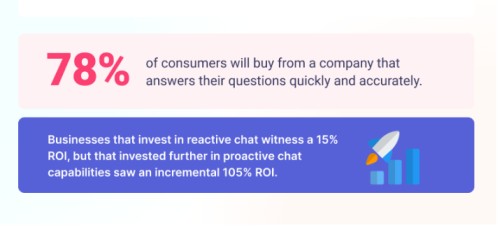
How does real-time help in customer satisfaction?
- You can use live tools such as video chat and co-browsing to gather key customer information, quickly identify the issue and ensure faster solutions.
- Engagement tools can help you diagnose the problem in the first contact issue via chatting and collaborating with the customer browser.
- Live tools are great to guide your customers through various stages and across their entire lifecycles.
6. Implement Customer Feedback
Feedback is always a wonderful tool to boost customer experience. You can also use it for rating customer satisfaction. It helps you know what customers think of your brand and how they perceive your products or service.
And now with the emergence of top engagement tools and channels like live chat or chatbot, you find it easy to collect, analyze and implement the feedback as and when needed. This is how you get relevant data to improve the customer experience.
In fact, you can now ask for customer feedback just after every conversation. You can decide to implement the feedback process at the pre or post-purchase stage. You can get feedback at every stage of the journey.
You can always use the Kano model of customer satisfaction to know the product attributes that can ensure value to customers and make them happy.
With feedback & opinions, you can bring the relevant changes to the product and meet customer expectations and fulfill their needs. And when you implement the customer feedback, you basically take a solid step toward boosting their satisfaction level with your brand.
Use REVE’s Engagement Tools to Boost Customer Satisfaction
Your business will need the right mindset and quality tools if it wants to achieve happy customers.
We, at REVE Chat, understand the value of customer satisfaction and strive to offer the best engagement tools for the same.
Your business can use our advanced AI chatbot software to automate customer service, ensure instant replies and delight their customers to no end.
With our co-browsing and video software, you will find it easy to do visual engagement with your customers and deliver value to them at each stage of the journey.
Similarly, you can combine the chatbot with live chat software and deliver hybrid support where humans will take care of complex conversations while technology will handle everyday simple questions.
Prioritize Customer Satisfaction with REVE’s Top-class Service Software
Customer expectations are growing by the day. And brands that lack the intent and tools find it hard to achieve happy customers.
At REVE Chat, we’re aware of how achieving customer satisfaction is a top priority for businesses and that’s why we bring world-class engagement tools like chatbot and live chat.
Start a free trial of top customer engagement tools and deliver value at each stage of the journey.

